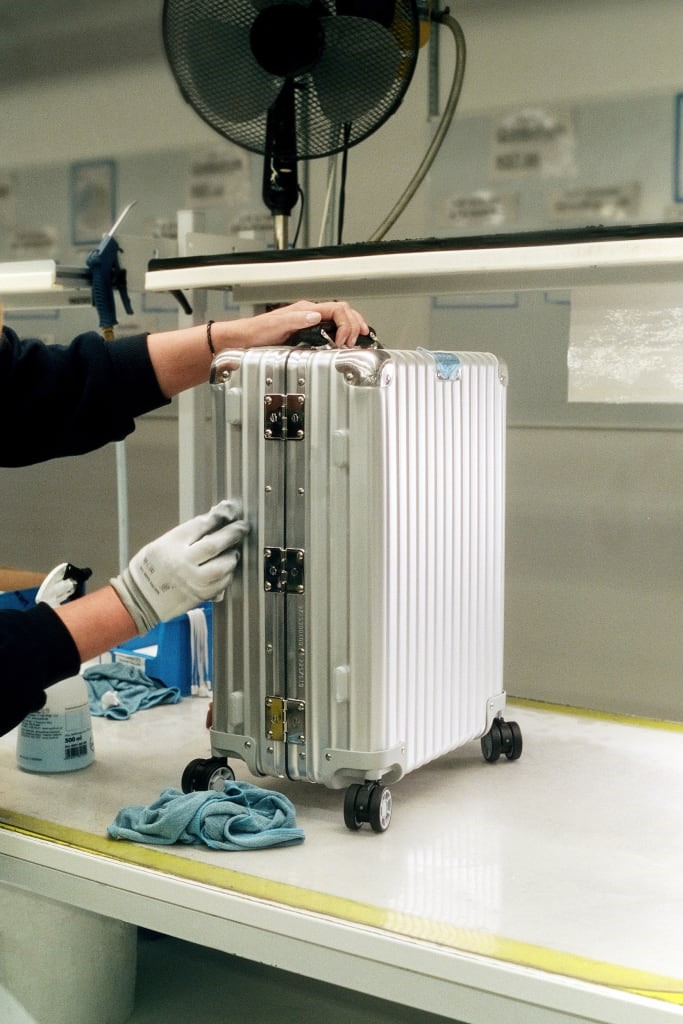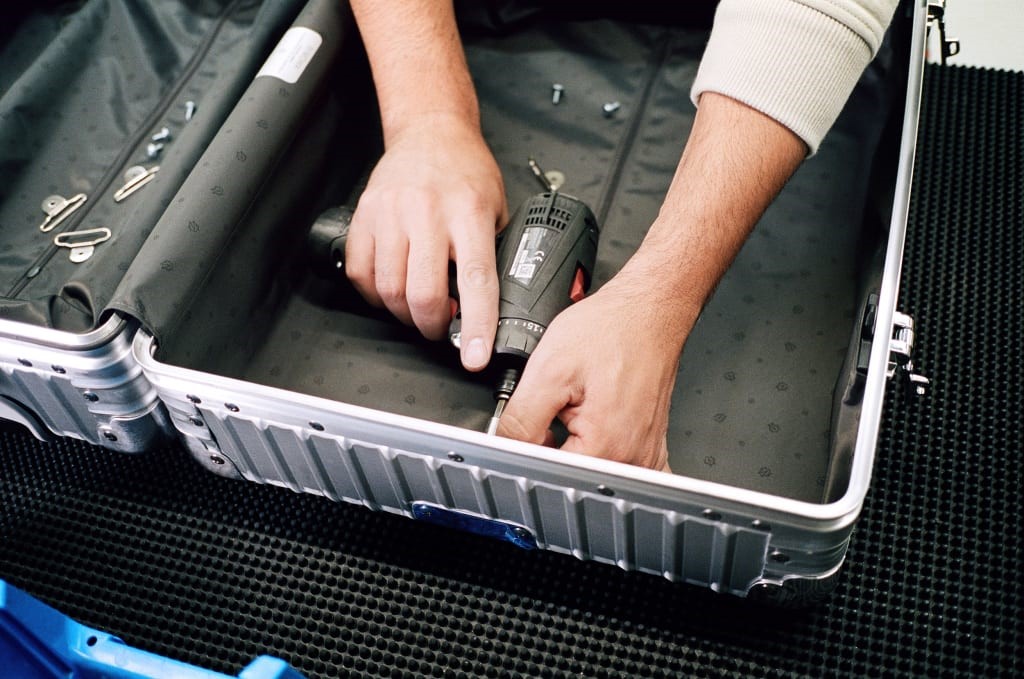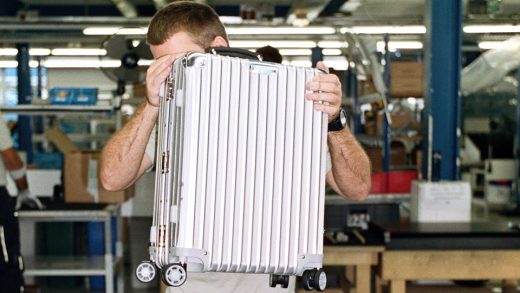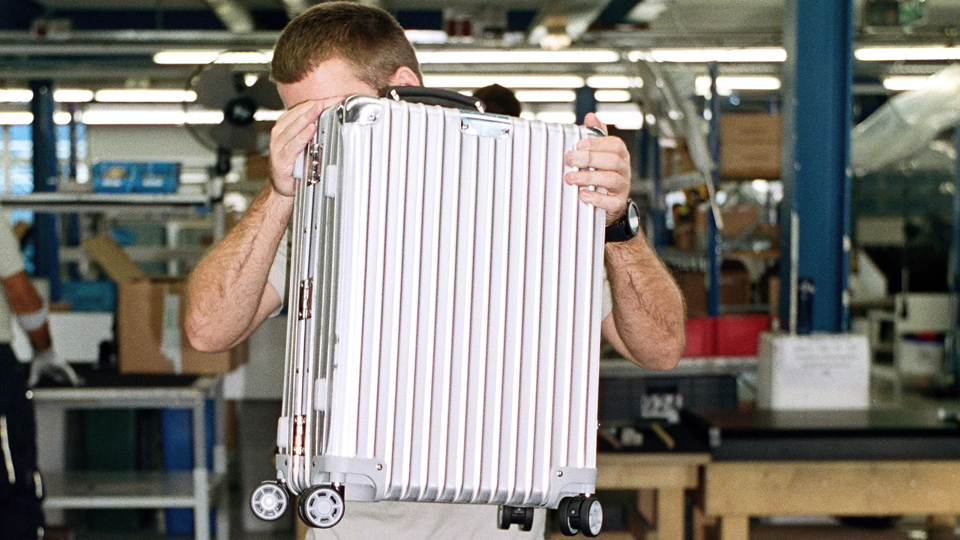Rimowa’s suitcases are designed to be broken— and then repaired
August 05, 2024
Rimowa’s suitcases are designed to be infinitely repaired
New legislation requires brands to create durable, repairable products. Rimowa’s network of repair centers offers a glimpse into this future.
After a particularly busy year of travel, my trusty, banged-up Rimowa suitcase hit a snag. The inner divider broke, which meant my clothes no longer stayed neat and contained.
Fortunately, Rimowa is known for its free repairs and, as of 2022, its lifetime guarantee. I bought my case into my local Boston store, where an employee fixed the divider by switching out the plastic tube inside it. In a matter of minutes, I was out the door, ready for my next trip.
Creating a robust repair program can seem like a radical act in our current economy. Over the past five decades, consumer culture has shifted toward disposability, with fast fashion and fast furniture becoming the norm. Companies create products with limited lifespans, ensuring the customer will come back to replace it, creating a stream of revenue.
But all of this is poised to change soon, thanks to a wave of regulations. Four states in the U.S. passed “right to repair” regulations that aim to make it easier and more affordable to repair goods, and more states have similar laws on the ballot. The European Parliament recently adopted similar regulations that go further, demanding that brands incentivize customers to repair rather than replace old products, by offering them discounts and vouchers.

It Begins With Design
As Rimowa’s experience reveals, building out a repair program is no easy task. It begins first with designing products that are repairable, and then building out a business model that doesn’t require the customer to frequently rebuy products. Given Rimowa’s incredible financial growth over the decades, it’s clear that it is possible to create a profitable business around products that last forever.
“Our repair program is key to our success,” says Emelie de Vitis, Rimowa’s VP of product. “Customers are willing to invest in our suitcases because we guarantee they’ll be able to use them for years and years.”
Rimowa’s designers—who are based in the brand’s headquarters in Cologne, Germany—focus on creating suitcases that are modular. All the pieces fit together perfectly, creating suitcases that are known for gliding effortlessly on airport floors and cobblestone pavements, and each part can be swapped out in the event that it breaks. This means that if a wheel or handle breaks, it does not render the entire suitcase useless. One of Rimowa’s repair experts can easily swap it out with a new part.
This approach to design and repair is part of Rimowa’s heritage, says de Vitis. Rimowa was first founded in 1898, at a time when consumers expected to get years of use out of their luggage, and preferably even pass them on to their children.
Over a century, the brand developed a reputation for creating innovative suitcases that adapted to the changes in travel. It began by making trunks for travel by ship, to aluminum cases on wheels, to lightweight polycarbonate cases. But even as its materials evolved, it focused on making sure the pieces were durable.
“It is really in our interest to ensure the suitcases are durable and well-designed, because we offer a lifetime guarantee on all of our products,” says de Vitis. “We would go out of business pretty fast if customers kept coming to us with broken suitcases that we could not fix.”

The Luxury of Durability
Another part of Rimowa’s history is it’s connection to the luxury industry. Its suitcases cost upwards of $800 (and can go for well past $2,000). In 2016, the brand was acquired by the French luxury conglomerate LVMH.
There are other luxury brands known for their repair program. Hermès, for instance, has several factories—including one in its Paris headquarters—full of artisans who can breathe new life into damaged, decades-old leather bags. Chanel and Louis Vuitton have similar programs. However, these repairs can be very costly, sometimes going up to hundreds or thousands of dollars, depending on how intricate the work will be.
Rimowa stands out among these luxury brands for offering repairs that are often free. This is partly because many common issues with suitcases, such as broken wheels or telescoping handles, are easily fixed thanks to its modular design. But more complex repairs that require more labor can come at a cost. “Given how generous our repair program is, we’re incentivized to create a suitcase that isn’t likely to break in the first place,” says De Vitis. “Otherwise, we’re just adding to our own costs.”
Importantly, however, Rimowa isn’t concerned about fixing cosmetic problems with its suitcase, like scratches or dents. In recent years, the brand has run ad campaigns showing scuffed, used suitcases as proof of being well-traveled. “We’re here to fix issues that have to do with the functionality of the product,” she says. “Many of our customers aren’t concerned about the scratches. It’s a mark of pride.”

An Elaborate Repair Network
Rimowa tries to make it easy for customers to repair their suitcases. Customers can go to their nearest store to start a repair. Easy repairs, like mine, can be fixed on the spot, since employees are trained to tackle easy jobs. But if it is a more complex problem, the store will send the suitcase to one of its dozen repair workshops around the world.
There, technicians will inspect the case to identify all possible issues. They then use precise tools to fix the problems, including sewing on new zippers. They also have access to an enormous catalog of spare parts including rare pieces from very old suitcases that are no longer being produced.
All of this increases Rimowa’s operating expenses. It’s expensive to open these dedicated repair centers and train an army of repair technicians. But de Vitis argues that it is precisely this attention to repair that encourages customers to pay the heavy price of one of these suitcases. “They’re willing to pay the upfront cost because they know they’ll be able to use the suitcase for decades,” she says. “Over time, you could be paying less than you would if you had to replace a cheaper suitcase every few years.”
Owning one really good product for decades, rather than several poorly made ones, is also better for the environment. It takes a lot of natural resources and carbon emissions to make a single suitcase. And if you end up throwing a suitcase away after a few years, it will likely end up in a landfill.
Many eco-friendly brands have launched repair services to encourage their customers to change the way they think about products. Much like Rimowa, Patagonia trains employees to handle basic repairs in store, but can also send more complex repairs to a repair workshop. Veja, the French brand, has opened workshops in France and the United States where customers can pay to have sneakers from any brand repaired for a small fee.
This wave of brands offers a glimpse into the future. As more “right to repair” legislation goes into effect, there’s hope that consumer culture will change. Brands will be incentivized to create long-lasting, repairable products. Consumers, for their part, will realize that durability is a virtue. When a product gets scuffed or torn, our first impulse won’t be to shop for something new; it’ll be to find the closest repair shop.
“It’s about changing the way people think about a product,” says de Vitis. “True luxury is having a product that is durable and that stands the test of time.”
ABOUT THE AUTHOR
Fast Company
(21)



